
The first step to preparing the rain garden site was to dig a trench for a drain tile to connect to the existing drain.

Once the tile line was in place, a 10’x50’ area was excavated, before layers of rock, sand, soil and mulch were added.

A biodegradable erosion blanket was placed over the mulch to keep it from washing away. Holes were cut in the blanket, and flags marked with plant names inserted.
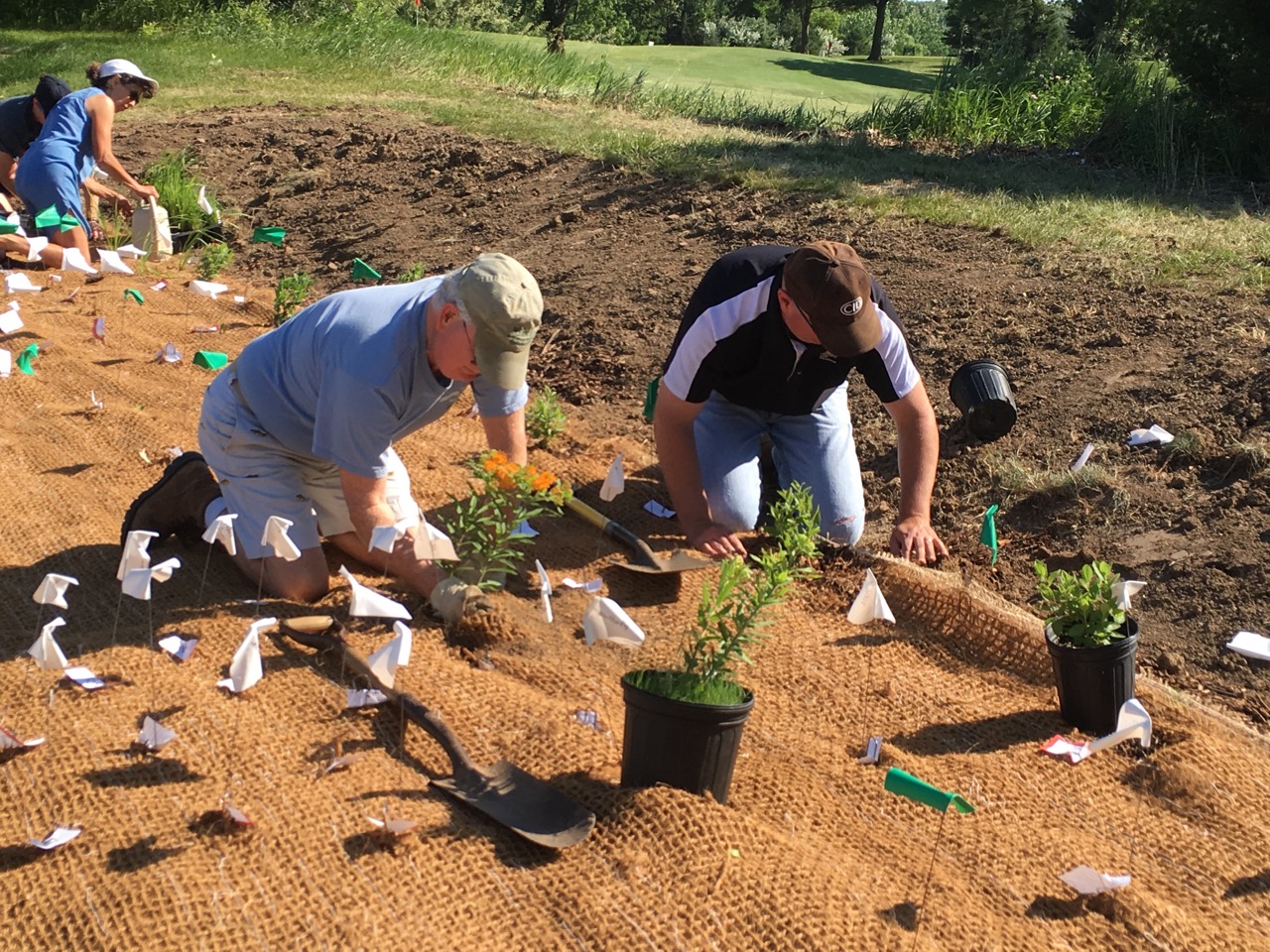
Steve Roe, left, is a Lake Panorama resident and Guthrie County Soil and Water Conservation District Commissioner. He and Brad Halterman, LPA project manager, helped plant the rain garden June 10.
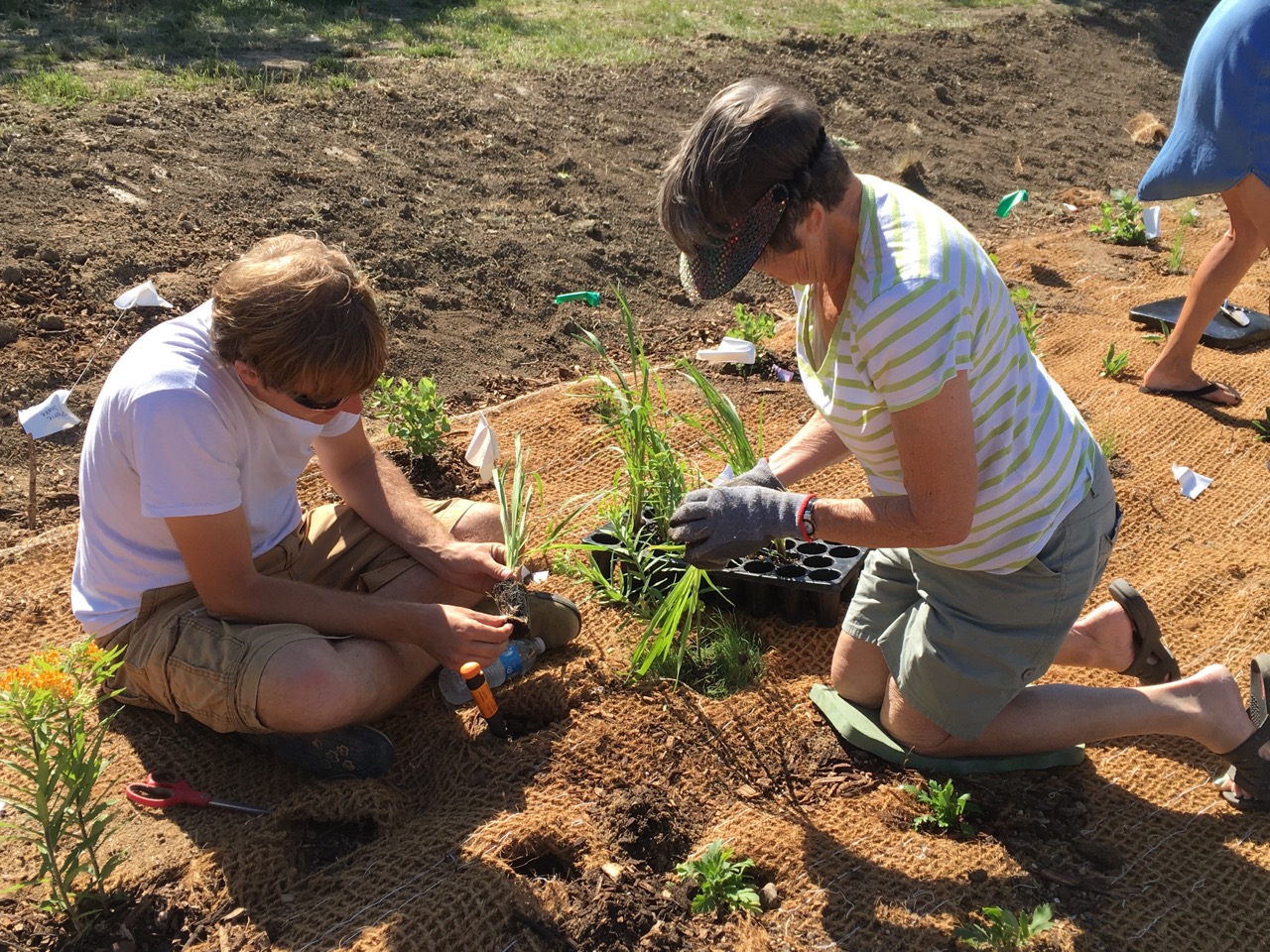
Derek Namanny, an urban conservationist with the Iowa Department of Agriculture and Land Stewardship, designed the rain garden and provided assistance throughout the development process. He also pitched in to help with the planting, and is shown here with volunteer JoAnn Smith.
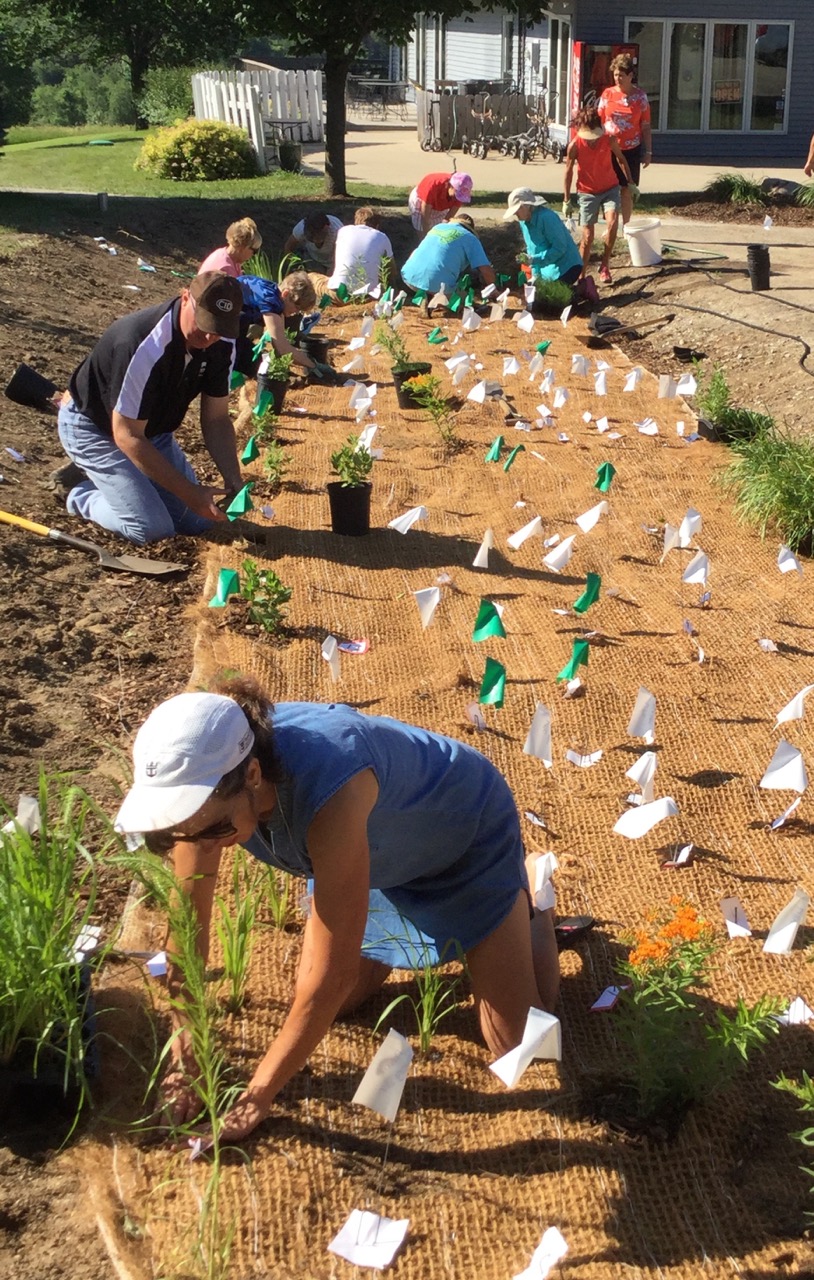
Members of the Panora Garden Club were joined by other volunteers to put the rain garden plants into designated spots. Shown in the foreground is Jean Weisz, co-chair of the garden club.

Helping with the rain garden planting, left to right, were Connie Ridgley, Carolyn Hejlik and Ai Dunlop.
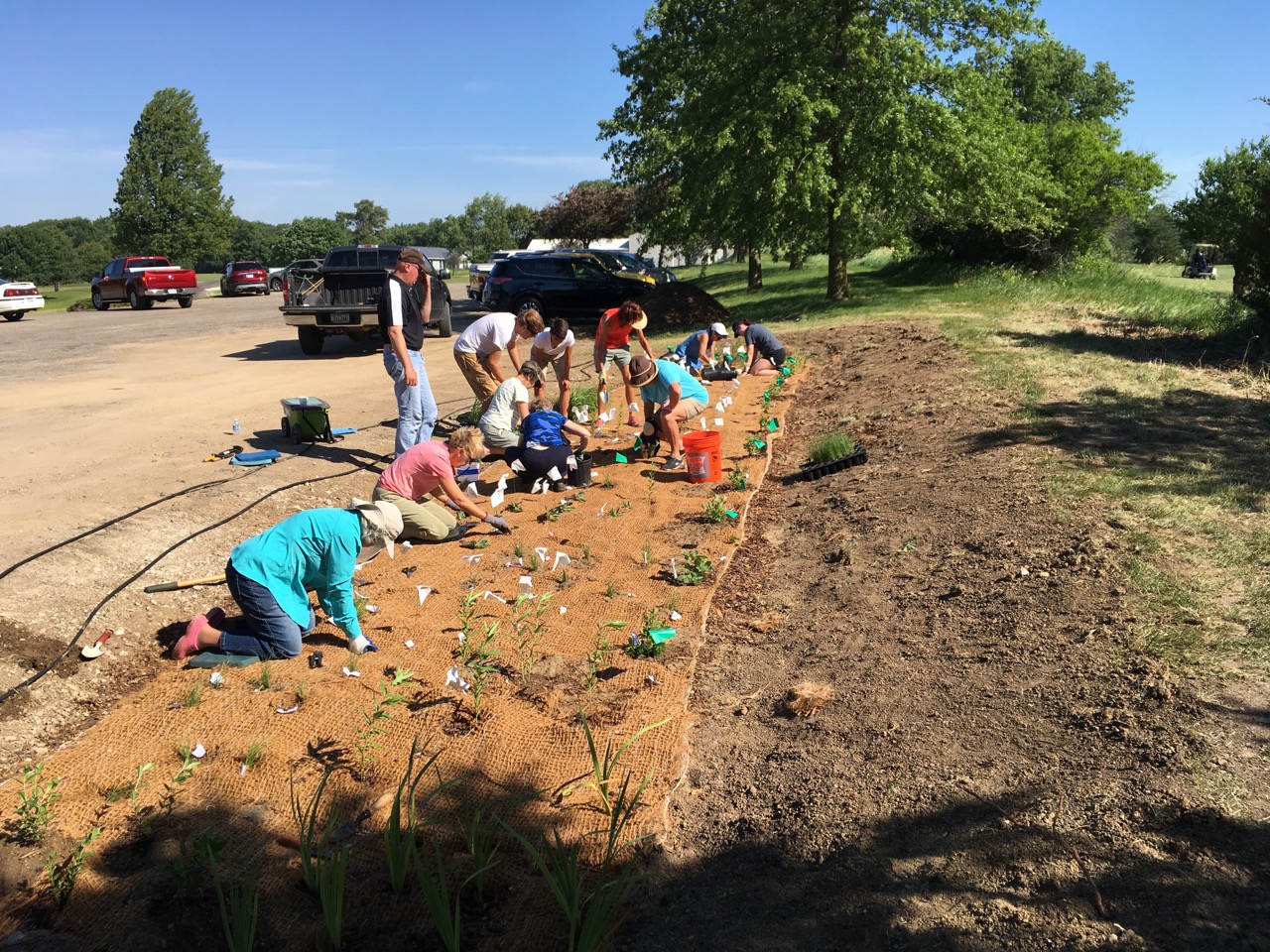
The rain garden will receive water runoff from the east half of the Panorama West parking lot. The plants will absorb some of the water, and the layers of mulch, soil, sand and gravel will slow the water movement.
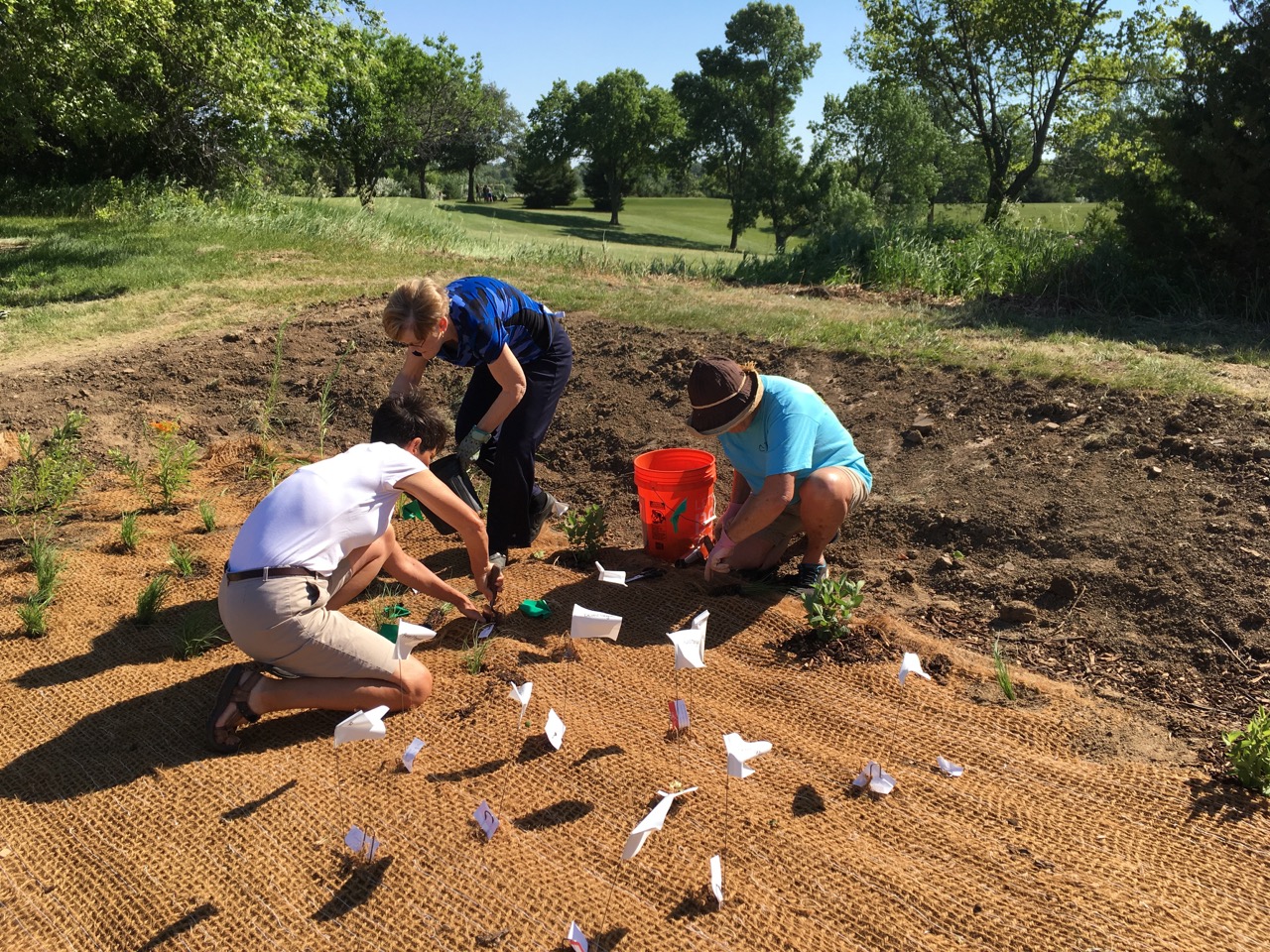
Emily Spradling, Connie Ridgley and Mary Kay O’Grady install new plants in the rain garden, which is located between the Panorama West parking lot and the first hole on the golf course.

The tall plants with white plumes along the east side of the rain garden are Culver’s Root. This plant blooms in July and August, and stands three to six feet tall. Along the rock wall are several volunteer common milkweed plants, that have been left in place to support monarch butterflies.

The purple-colored flowers on the Prairie Blazing Star attract butterflies, bees, and hummingbirds. A bonus is that this plant is deer resistant.

This Red Milkweed plant in the Panorama West rain garden is popular with pollinators, as well as butterflies like this Painted Lady.

An informational sign explains how rain gardens help improve water quality. The Panorama West rain garden features 170 native plants in a dozen different varieties. The sign shows the names and photos of eight varieties. Details on all 12 plant varieties are available on the Friends of Lake Panorama website.












